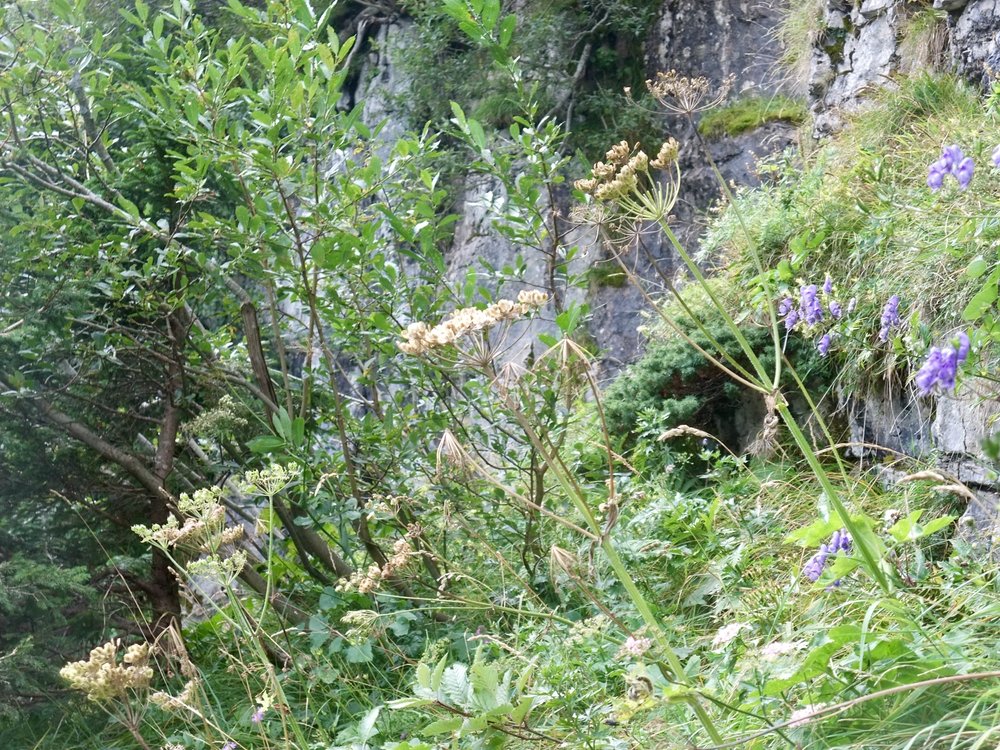Appenzeller care of Emmi USA
Few cheeses fit the prototype of “Swiss cheese” in a broad sense — those with large, telltale “eyes” or holes, which are formed as a result of carbon dioxide bubbles released during aging — and Appenzeller is definitely one of them.
Swiss But Not Alpine
Hills surrounding Appenzell in Switzerland
While the generic term Swiss cheese doesn’t come close to being able to encapsulate all the myriad cheeses made in Switzerland, neither does the term Alpine. (Stay tuned for a future installment of what makes a cheese officially Alpine.) Often grouped in with its Alpine brothers for its Alpine-adjacent nature and similarities to cheeses such as Gruyère and Emmenthaler, Appenzeller also has some notable differences that don’t qualify it as Alpine. Read more about Gruyère. “Alpine cheese can only be produced at a certain altitude and in the summer months,” says Pirmin Baumann, Head of Quality Management for SO Appenzeller Käse GmbH, the trade association dedicated to the standards and promotion of Appenzeller. “The Appenzeller production area is clearly defined and is limited to the cantons of Appenzell, St. Gallen, and Thurgau,” says Baumann, “however, these are not in the Alpine area.” One producer of Appenzeller characterizes its landscape as “hilly” rather than mountainous.
What is Appenzeller and How Is it Made?
Cows in Appenzell
But enough about what it isn’t, let’s dive into what it is. To start, it is worthy of your attention: “Appenzeller is totally snackable and beautifully meltable,” says Hannah Howard, cheese expert and author based in Frenchtown, NJ. “It’s approachable enough for cheese newbies and complex enough for cheese nerds; like all artisan cheeses, Appenzeller is unique because it reflects the unique place where it is crafted.”
Appenzeller, while not technically an Alpine cheese, does enjoy AOP name protected status in Switzerland, which governs in which specific pockets it can be made. Learn more about geographical indication names. Similar to some Alpine cheeses, Appenzeller is a raw, firm, cow’s milk cheese with a cooked and pressed curd. Also like its Alpine brethren, Appenzeller has a washed rind.
Beyond that, however, there are important aspects that differentiate it. The brine used to wash and cure Appenzeller includes a significant herbal element, which may differ from producer to producer, but all are well-kept secret recipes purportedly only known by a few people at a time and passed down among generations, making it also one of the most recipe-protected cheeses in the world. As a much smaller format cheese than certain Alpines— the Gruyère to Appenzeller ratio by weight is about 5 to 1 — the washed, herbal rind creates more of a pronounced flavor in the paste itself, causing it to frequently be dubbed “spicy.” Appenzeller is made year round, and therefore not dependent upon alpage, the practice of allowing cows to free graze on Alpine pastures of a certain altitude, the herbal brine creating its flavor more so than the seasonal quality of the milk.
History of Appenzeller
Flowers and herbs growing in Appenzell region
Appenzeller is one of the oldest known cheeses not only in Switzerland, but worldwide, with recorded references dating back over 700 years. While specific details regarding its recipe and process don’t begin until sometime later, it is probable that early cheeses deemed Appenzeller weren’t quite what we know of Appenzeller now, as washing of the rind is attributed to French monks in the 16th century, and the utilization of herbs to further the flavor of the brine may be even later still.
The Appenzeller trade association was formed in 1942, and the AOC established in 1981. Currently, more than 40 cheesemakers and over 800 dairies contribute to its production.
Appenzeller Tasting Notes
Appenzeller purple label
Appenzeller includes several different age expressions, classified by different color labels, ranging from a minimum of three, to nine or more months of aging. (Silver, Gold, Black, and Purple, in order from youngest to oldest.) The intensity of the flavor of these cheeses increases with age, and the older Appenzellers can often form crunchy tyrosine crystals. Other Appenzeller expressions also include an organic selection, (Green) an ancient recipe made from skimmed milk, (Brown) and an enriched recipe made with additional cream (White).
Regardless of age statement, it’s hard to find a description of Appenzeller that doesn’t call out its especially herbaceous and spicy nature. “It has a robust smoothness, a savory and sweet depth, and notes of toasted hazelnut, fresh cream, and all those aromatic herbs,” says Howard. Emmi, one of the producers of Appenzeller highlights its “herbal spiciness, suggesting ginger, black tea, and clover.” (Are any of these hints about the brine?) Farmstead Cheeses and Wines deems Appezeller’s nature “robust, rich, and complex, including herbaceousness, and savory notes of flowers and grasses.”
Appenzeller Pairings
Wine, cider and gin pairings for Appenzeller
Because of its savory nature and exceptional meltability, Appenzeller can function like an Alpine cheese — fondue, grilled cheese, and mac and cheese are all excellent uses for Appenzeller, which contributes a bold and spicy touch. Perfect pairings also follow suit: ham, pickles, and potatoes are recommended for an ooze of melted Appenzeller.
On the beverage side, it’s sometimes hard to remember that Switzerland makes wine (they don’t export much of it,) so common Swiss varieties like chasselas and pinot noir offer different, but equally successful takes on a wine pairing, or else a crisp, hard cider can also brilliantly wash down a hearty, Appenzeller-fueled dish. As juniper is also rumored to be one of the commonly featured botanicals in the brine, it might be a cheese that also welcomes a bolt of gin. A few to try: The Seeker Pinot Noir, (2023 NYIWC Double Gold) McKenzie’s Original Hard Cider, (2023 NYIBC Gold) and Dented Brick Distillery Barrel Finished Gin. (2023 NYISC Gold)



